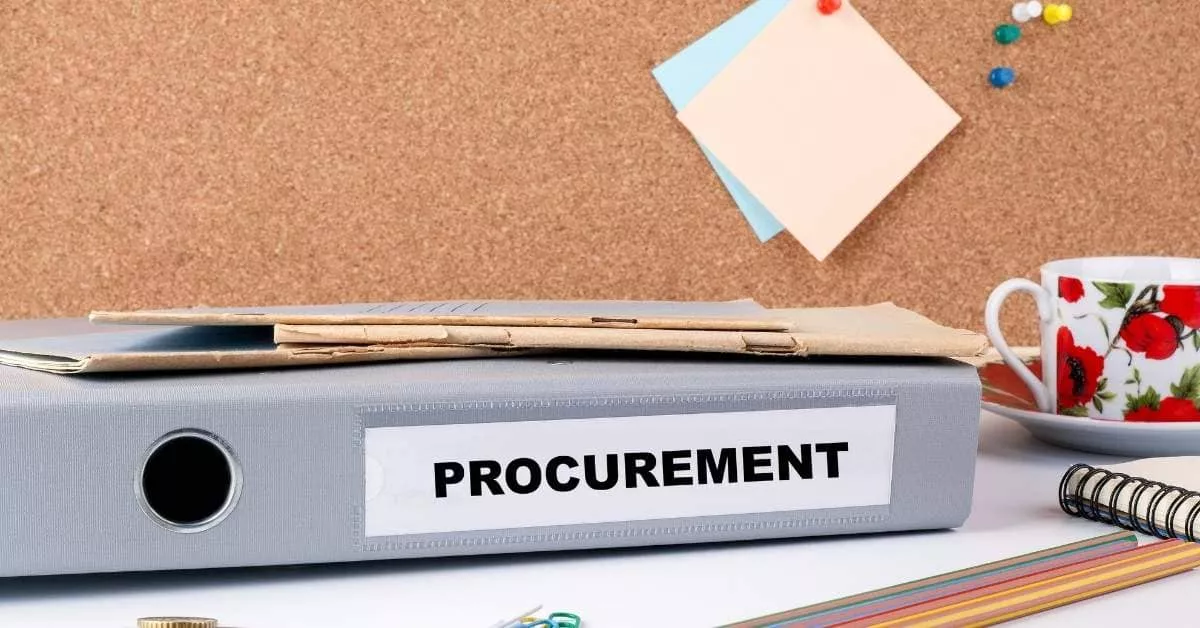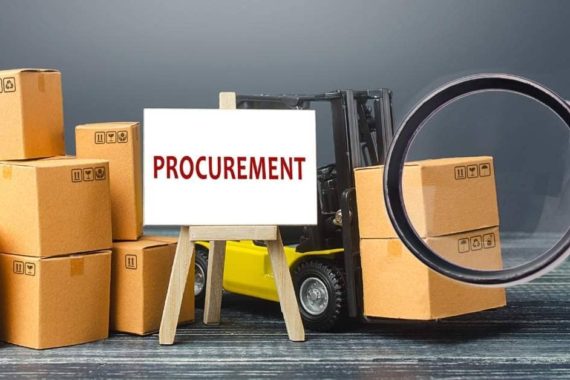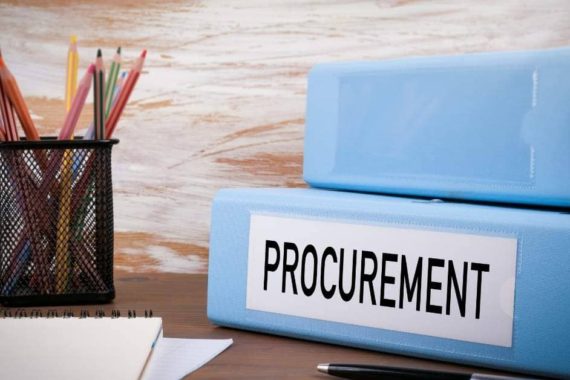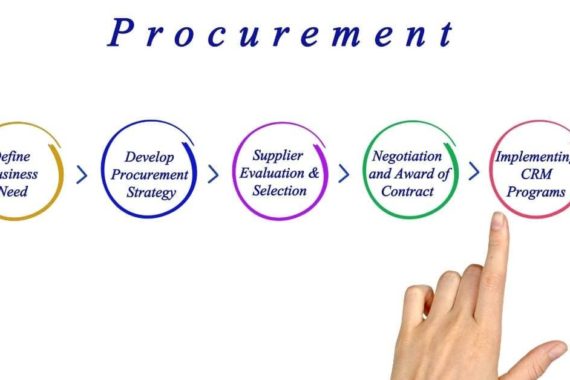
Introduction
Did you know that procurement management is responsible for nearly 50% of your organization’s spend? Businesses need to take a good look at their procurement processes, or else they could be losing a lot of money. In the past few years, construction processes have changed drastically and it’s time for leaders to embrace those changes.
There are plenty of reasons why the entire procurement process needs to be changed.
Procurement is the process of purchasing goods and services. In construction, it’s how you get things done. There are plenty of reasons why the entire procurement process needs to be changed.
The current procurement model suffers from several issues:
- It can take up to 50 days for a project team to receive bids from suppliers
- Information isn’t shared between suppliers and subcontractors making it difficult to coordinate their work
- The whole process costs too much money (estimated at $2 trillion dollars in North America)
- The whole system is not sustainable: there’s no room for innovation because technology has not been integrated into it
- The whole system isn’t efficient; with so many people involved in each step, you have a lot of wasted time and effort going on for no reason. You also don’t cut out unnecessary steps like using traditional methods like faxes/emails when instant messaging or web apps could do just as well if not better!
All this means that we need new ways of doing things…
The State of Procurement Management Systems
Procurement management is the process of managing all phases of the procurement lifecycle. It includes a plan, sourcing, negotiating and awarding contracts. The function of procurement management systems can be described as providing automated tools that improve efficiency through increased automation and accuracy during the processing of purchase orders.
Procurement Management Systems (PMS) is changing how businesses work today. They streamline processes and provide real-time information to suppliers and buyers in many different industries – from construction projects to complex supply chains that involve multiple business entities across various locations around the globe.”
Modern procurement management systems in construction need to include both the technical and human sides of the business.
In order to fully understand the complex nature of modern procurement management, we must consider both the technical and human sides of the business.
Technical: The modern construction process is more than just a simple building project—it’s a complex system that incorporates multiple stakeholders with different needs and expectations. In order to successfully manage these interactions, you need an integrated system that allows you to leverage your entire network while keeping track of changes in status or priority.
Human: As a manager, you’ll want access to tools that allow your team members (and contractors) to submit requests easily. You don’t want anyone having trouble getting their work done because technology was too complicated for them!
These systems must include both suppliers and subcontractors in order to keep updated information about costs and changes in prices.
The complexity of construction projects has increased significantly in recent years, which means that it’s more important than ever to keep accurate records and communicate effectively with suppliers. In order for your construction project to progress smoothly and efficiently, you need good communication channels between suppliers and subcontractors.
It may be tempting to try to cut costs by reducing the number of suppliers involved in your project, but if you do this you risk missing out on opportunities for cost savings or better-quality materials. A better option is to select suppliers carefully based on their experience working with other clients like yours and then establish an effective system for communicating clearly with them throughout the construction process.
At ConstructionConnect™ we have developed software specifically designed for these purposes—our Procurement Management System (PCM) allows businesses like yours access all relevant information about their supply chain while keeping track of all changes made throughout each stage of production so they can make informed decisions about sourcing materials at competitive prices without compromising quality standards
Construction Processes and the Trends that are Changing the Industry
The construction process has changed drastically over the last few years, but there is still room for improvement.
- Construction processes have changed significantly over time.
- Construction processes have changed significantly over time and there is more room for improvement.
Top 5 Recent Technologies That are Revolutionizing Construction Processes
Top 5 Recent Technologies That are Revolutionizing Construction Processes
3D printing is one of the most exciting technologies of our time. With 3D printing becoming more and more popular in construction, there are a number of techniques that you can use to get the most out of it for your business. Here are five ways to make sure you’re using 3D printing correctly:
- Create models from existing designs – Instead of creating new blueprints or sketches yourself, why not just print out an existing model? This can save you time and money while still getting results that look great!
- Use models as a starting point – If you want something that’s not already available on Thingiverse or similar sites, then consider taking an existing model and modifying it with CAD software (or even Google Sketchup). You could also try combining several different ones together before making changes so as not to lose any valuable information along the way
Sustainability Is Becoming a Necessity
You can’t fail to have noticed that sustainability is becoming a trend in construction. It’s not just a marketing ploy, though – it’s also a way to attract clients and talent, as well as investors.
In fact, many of the top firms in the industry are now actively pursuing LEED certification for their projects—and for good reason: according to research conducted by AECOM Technology Corporation and published by ConstructionDive, LEED-certified buildings are 20 percent more valuable than non-LEED buildings. While this figure may seem somewhat insignificant at first glance (20 percent doesn’t sound like much), keep in mind that these extra dollars add up quickly over time. Based on an average lifespan of 40 years for commercial buildings and 60 years for industrial structures, 20 percent higher value means an extra $1 billion worth of property over those four decades!
3D Printing Is Becoming More Accessible
It’s becoming easier for more people to get their hands on 3D printing technology. Technology is becoming more accessible to the general public, small businesses, large businesses, and construction companies.
This is an exciting time for the industry because it means that anyone with a good idea can bring their ideas to life by printing instead of manufacturing from scratch or having something made in countries without strict environmental regulations.
Mobile Technology Has Made it Easier to Manage Projects Remotely
As we’ve already touched on, mobile technology has made it easier to manage projects remotely. This is due to the fact that all of the necessary information can be accessed by simply logging into a company’s online project management software. Project managers can track and update tasks from any location at any time—whether they are in an office or at home.
Mobile technology also makes it easier for employees to collaborate across multiple locations, which allows them to find solutions quickly when problems arise during a project. Using mobile devices and apps encourages workers on the job site (or elsewhere) to stay connected with one another while working towards achieving common goals as part of your team. While some may see this as a disadvantage, there are many benefits associated with using mobile devices:
- Increased productivity due largely in part because you have access anywhere at any time;
- Improved communications between coworkers/managers;
- Easier collaboration among colleagues;
- Better decision-making among project stakeholders.
Wearable Technology is Saving Time on Reporting
Wearable technology is becoming more common in construction. This technology is saving time on reporting, meetings, paperwork, training and project management. The benefits are significant for contractors as well as the owners and designers of buildings.
Contractors can use wearable technology to track their employees’ productivity on a daily basis. For example, one of our clients uses Fitbits to monitor how many steps each employee takes per day or if they are getting enough sleep at night (or not). In addition to tracking physical activity during work hours, some contractors also use apps like Foursquare when they go into restaurants after work so that they can earn points toward rewards such as gift cards or cash-back incentives!
Augmented Reality Allows Companies to Attract New Talent and Build Better Relationships with Clients
Augmented reality is a new way to bring products to life. It’s a great way to show off your products and build relationships with clients.
Augmented reality is also a great tool for attracting new talent, showing off your work and ideas, or simply adding some fun to any business event.
Advice for Industry Leaders
If you’re a construction industry leader, it’s important to learn how to adapt and change as the marketplace continues to evolve. Here are some tips:
- Be open to new ideas that could make your company more efficient.
- Expect the unexpected—construction projects aren’t always going to go according to plan.
- Be flexible enough in your thinking that you can handle new challenges when they arise.
- Learn from your mistakes and make sure they don’t happen again in the future (if possible). If not, try not to repeat them!
- Be proactive about identifying opportunities for improvement around your business processes or core competencies; take advantage of these opportunities so that you stay competitive in today’s fast-paced environment.* Finally, remember that leadership means being a team player who helps mentor other team members so that everyone benefits from working together toward common goals.*
The procurement process has changed drastically over the last few years but there is more room for improvement.
While the procurement process has changed drastically over the last few years, there is still plenty of room for improvement in terms of technology, processes, and training. Procurement management systems need to be improved so that they include suppliers and subcontractors. The human side should be included as well as the technical side of the business. Sustainability should also be considered when making these improvements.
In order for companies to succeed in their business endeavors, they must have a strong supply chain management program in place that includes all aspects of modern procurement: planning and scheduling; purchasing; logistics; inventory control/management; production monitoring, and quality control/management.
Conclusion
We hope you’ve found this article informative and helpful in understanding how procurement management processes have changed over time. If you’d like any further information or advice on these topics, feel free to contact us today.













